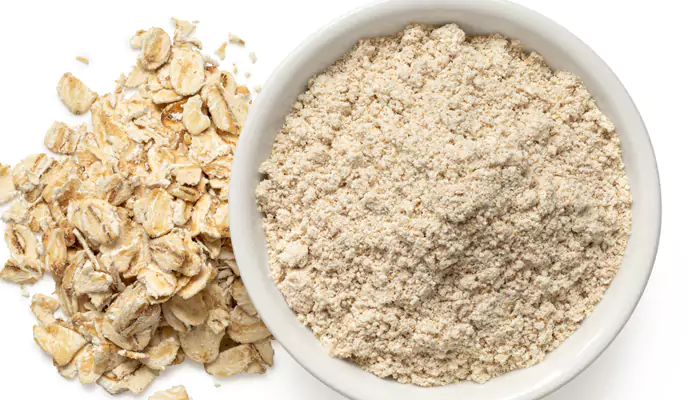Ran Out Of Gram Flour? Six Healthy Substitutes You Can Use To Make Fried and Baked Foods
Looking for gram flour aka chickpea flour (besan) alternative? Follow our guide to explore the best besan alternatives for making fried and baked foods.
- Satavisha
- 04 June, 2025
- 2 mins ago

Ran Out Of Gram Flour? Six Healthy Substitutes You Can Use To Make Fried and Baked Foods
Looking for gram flour aka chickpea flour (besan) alternative? Follow our guide to explore the best besan alternatives for making fried and baked foods.
Gram flour or besan is extracted from ground chickpeas. The extraction process involves discarding the chickpeas’ outer skin before grinding them to achieve a fine flour-like powder. Besan is gluten-free and has a subtle nutty flavour.
This naturally gluten-free flour is widely used in culinary applications and promotes numerous health benefits. Besan is ideal for gluten-free baking, frying and cooking and is an excellent source of lysine, protein, minerals, vitamins, and fibre.
A staggering number of chefs around the world use gram flour as their staple ingredient for gluten-free and healthier recipes. Now, finding an alternative that can match this standard may seem challenging. But fret not, the guide below will help you find a suitable substitute!
Almond Flour
For baked recipes like cakes, cookies and muffins, use almond flour if you have run out of gram flour. It releases a mild nutty flavour but it is more moist than gram flour—so mindfully tweak the liquid content in your dish. Almond flour smoothly substitutes chickpea flour. It is lighter but perfectly incorporates that savoury nutty charm. Its richness helps add a flavour boost to any recipe.
Coconut Flour
Coconut flour is a lighter option as compared to gram flour, but it will delight you with its versatility. It has the capacity to absorb more liquid—so slightly adjust your recipes. Additionally, coconut flour has a subtle sweet taste, quite different from the nutty hint of gram flour—making sweet recipes taste better. When substituting, follow a 1:4 ratio (chickpea to coconut).
Rice Flour
Finely milled brown or white rice is used to produce rice flour. Do not mistake it to be the same as rice starch (which is commonly used in processed foods, as a whitener). Rice flour is gluten-free and offers breads, biscuits and cakes a crumbly, light texture. You can also use it to make pancakes, puddings, and bread dough.
The fine texture of rice flour offers a smooth finish. Surprisingly, it also helps thicken various sauces without adding heaviness. However, it is tricky to work with rice flour. It is essential to note that it does not absorb as much liquid as gram flour does, resulting in crumbly or dry bakes.
All-Purpose Flour
It is the ultimate backup ingredient that works wonders every time. Substituting it with gram flour is easy—a cup for a cup deal. All-purpose flour will offer the optimum level of dampness your cake recipe needs, minus the nuttiness of gram flour. It is the best option for those who like their sweets simple and plain. If you are considering ditching gram flour in your gravy recipe, no stress—all-purpose flour will cover it by maintaining the smoothness of the sauce.
Oat Flour
This wonderful alternative is particularly useful in baking recipes. It has a sweeter and milder flavour than gram flour. However, it is critical to consider the texture and flavour differences between both options and initiate adjustments accordingly.
To swap, begin by substituting gram flour for oat flour in a 1:1 ratio. Remember, oat flour soaks less liquid than gram flour. So, if the dough or batter becomes too dry, consider adding more liquid ingredients (like milk or water) to acquire the desired consistency.

Quinoa flour
Quinoa flour is lighter than gram flour and makes baked foods fluffy. Substitute one cup for a cup. If you are using it in baking recipes, your bread will remain moist and light. Quinoa flour adds a mild earthy flavour, unlike the nuttiness of gram flour. Additionally, it has a fine texture and is best suited for both savoury and sweet dishes. It also serves as an excellent thickening agent.
We hope this flour swap guide comes in handy in times of “besan” crisis.










